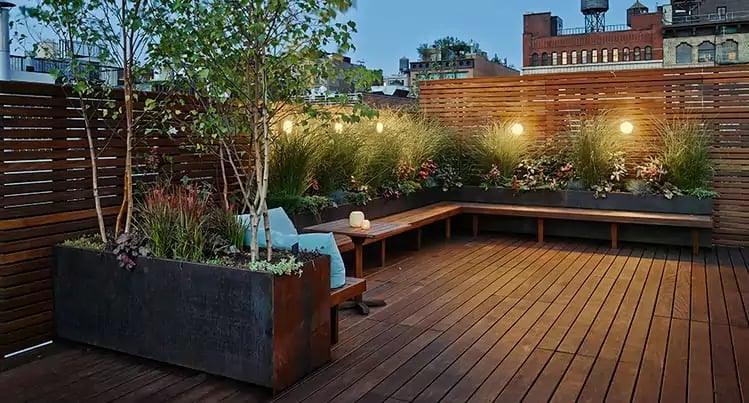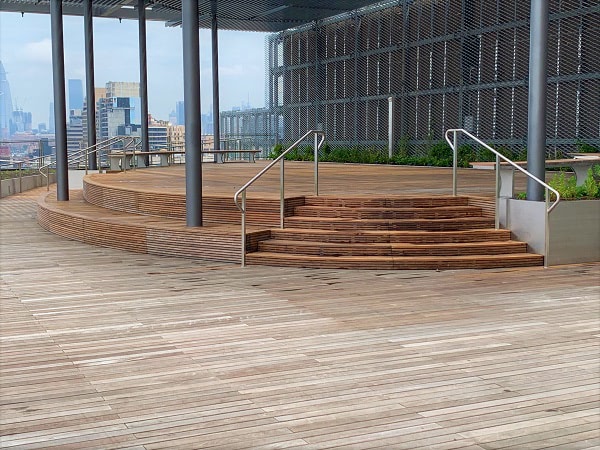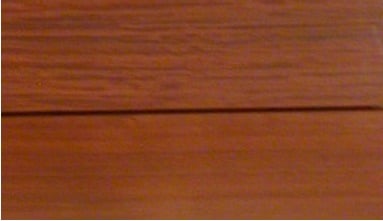
MATAVERDE® PREMIUM IPE WOOD DECKING
The Ultimate Choice for Durability, Beauty, and Performance
Discover the unmatched strength and elegance of Mataverde Sustainable Ipe Hardwood Decking. Ipe wood is the gold standard for high-quality wood decking. It is well known for its exceptional durability, natural resistance to decay, and rich aesthetics. Perfect for decks, docks, piers, and outdoor living spaces, Ipe outlasts and outperforms nearly every other material.
What Is Ipe Wood?
Ipe wood decking is a dense, durable hardwood that originates from Central and South America. Also called Brazilian Walnut, Pau Lope, and Ironwood, Ipe is a celebrated building material. It has earned its reputation as one of the most reliable and long-lasting materials for outdoor use.
Its exceptional strength and natural resistance to decay, insects, and fungi stand alone. These features and more make it the benchmark for all hardwood decking materials.
Why Choose Ipe for Your Outdoor Projects?
- Durability: Long-lasting, withstanding up to 50 years or more in outdoor conditions.
- Natural Resistance: Resists termites, rot, and decay without chemical treatments.
- Versatility: Ideal for decks, docks, boardwalks, and more.

What Makes Mataverde Premium Ipe Decking Stand Out?
If you're searching for the best natural wood for decking, Mataverde Premium Ipe is your ultimate decking solution. Our sustainably harvested Brazilian hardwood is not only stunning but also outperforms all other decking materials.
Key Features of Mataverde Premium Ipe:
- Sustainability: Responsibly sourced, eco-friendly wood decking option.
- Unmatched Strength: Withstands wear and tear, making it ideal for high-traffic areas.
- Scratch-Resistant: Perfect for families, pets, and heavy foot traffic.
- Fire Resistance: Class A fire rating, ideal for fire-prone areas.
- Mataverde Ipe decking wood is backed by a 25-Year Limited Warranty. This ensures peace of mind and satisfaction for decades.
The Beauty of Ipe: Color & Grain
Ipe hardwood decking is renowned for its exotic beauty and natural grain patterns. The wood boasts a variety of rich hues, ranging from olive and reddish-brown to dark chocolate tones. Its distinctive graining and figuring give each board a unique, luxurious look comparable to fine interior hardwood flooring.
Browse Ipe Deck Projects Photo Gallery
Why People Love Ipe’s Natural Aesthetics:
- Stunning color variations make every project unique.
- Exotic graining patterns add character and sophistication.
- Whether sealed or left to weather naturally, Ipe enhances any outdoor space.
Exceptional Physical Properties of Ipe Wood

Ipe hardwood decking is more than beautiful—it’s engineered by nature to excel in extreme outdoor weather conditions. Here's why Ipe stands out:
Water Resistant Durability
Decay Resistance: Rated as highly resistant to fungi, termites, and rot.
Longevity: Lasts 40-50+ years with minimal maintenance.
Strength
Janka Hardness: 3,680 lbs., over three times harder than red oak.
Bending Strength: 23,360 psi—strong enough to support heavy loads with minimal flex.
High Density
Extremely Dense: With a density of 1.04 g/cm³, Ipe is so heavy it sinks in water.
Fire Resistance
Class A Fire Rating: Ideal for use near fire pits, grills, or in WUI and other fire-prone regions.
Learn More About Ipe Characteristics
Installation Tips for Ipe Decking

Due to its extreme density, installing Ipe wood for decks requires special tools and techniques. Here's how you can achieve professional-grade results:
- Pre-Drilling: Stainless steel screws ensure secure fastening.
- Hidden Fasteners: For a seamless look, use Mataverde Concealed Deck Fasteners.
- Advanced Techniques: The Ejector screw system saves time and effort.
Discover Ipe Installation Techniques
Care and Maintenance for Ipe Hardwood Decking
Ipe is an incredibly low-maintenance decking material. To keep your deck looking its best:
- Clean regularly to remove dirt and debris.
- Apply a UV-protectant oil finish annually to preserve its rich tones.
- Let it weather naturally to a silvery patina for a no-maintenance option.
Explore Maintenance Tips for Hardwood Decking
Learn More About Ipe Low Maintenance Options
Why Builders and Architects Recommend Hardwood Ipe
For decades, contractors, architects, and homeowners have trusted Ipe for its reliability and performance. Whether you’re designing a high-end backyard retreat or a commercial boardwalk, consider this material. Ipe is the top choice for hardwood Ipe decking worldwide.
Attention Contractors: Download our free Contractor’s Guide to Decking for tips and insights to elevate your next project.
How Does Ipe Compare to Other Deck Material Options?
Unlike softwoods, composites, or plastics, hardwood Ipe decking offers:
- Superior Strength: Unmatched hardness and resistance to scratches.
- Sustainability: 100% natural, responsibly sourced wood.
- Timeless Beauty: Rich colors and unique grain patterns that don’t fade like composites.
COMPARE IPE TO SYNTHETIC AND COMPOSITE DECKING
Ready to Build with the Best?
Elevate your outdoor living space with Mataverde Premium Ipe Hardwood Decking. From design to installation, we provide everything you need to create a breathtaking, long-lasting deck.







